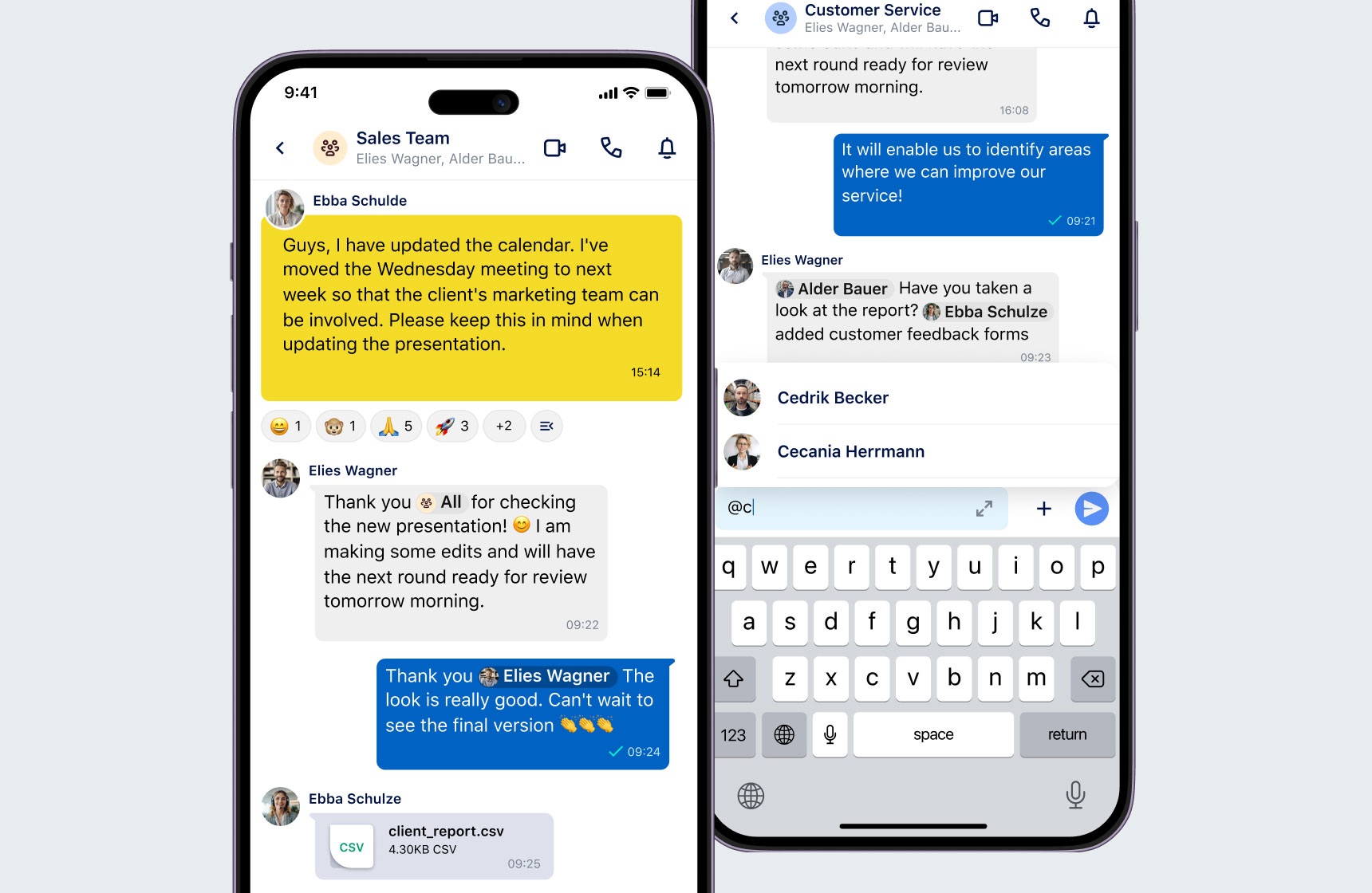Formulating Messages
1. Keep Messages Short and to the Point
Concise sentences are the be-all and end-all of messenger netiquette. If the information cannot be conveyed in a few sentences, a voice message or video call is recommended. If there is a lot of information, you should consider using alternative media Sending a lot of information in a text message is not only annoying for the recipient, but also defeats the purpose of concise communication.
2. Reply in Full
Some people have the habit of sending every word or half-sentence of a text message individually. For the recipient, this means a lot of consecutive beeps, which can rightly be annoying. It is better to send whole sentences and structure information using paragraphs.
3. Stay Professional
Since Messenger is used for professional communication here, it should be remembered that every text sent reflects one’s own professionalism. When making initial contact, it is therefore also advisable to briefly introduce yourself in one sentence. Capital letters or bold text are generally out of place. Exaggerated punctuation such as “???!” and “!!!” should also be avoided This is because it would imply that a message is being shouted or given undue importance.
4. Use Emojis 😀
Emoticons and emojis have become established in messengers and everyone knows and uses them. Emoticons also have their place in the professional use of a messenger and can support communication and collaboration In some cases, emoticons can also lighten up communication and contribute to a positive mood. However, messenger netiquette recommends using emoticons in moderation and as a supplement to text. This is because everyone interprets emoticons differently and does not necessarily know all the emoticons, so this can also lead to confusion.
5. Pay Attention to the Way You Express Yourself
A text message can only be read and cannot be supported by gestures or facial expressions. The more precise the expression, the clearer the communication. For example, sarcasm or harsh words are usually not recommended because they can be misunderstood and lead to misinterpretation. It is therefore advisable to use neutral wording and good expression.
6. Be Sure to Proofread
Text messages may be a quick way to reply, but you should always check your grammar and spelling. You should also regularly check your autocorrect. If you are unsure about any of this, you can use some free add-ons and tools available, such as:










